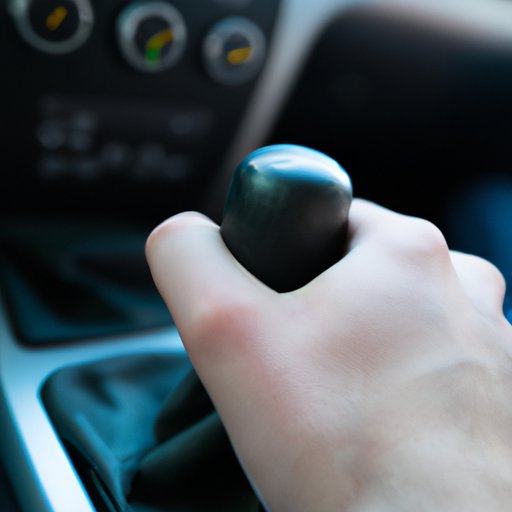
I. Introduction
Driving a manual car can seem daunting at first, but it’s a valuable skill that can enhance your driving experience and make you a better driver. With practice and patience, anyone can learn how to drive a manual car. In this guide, we’ll cover the basics of manual transmissions, starting a manual car, shifting gears, parking, driving in different road conditions, common mistakes, and how to avoid them.
II. Understanding the basics of manual transmissions
A manual transmission is a type of transmission that uses a clutch and gears to transfer power from the engine to the wheels. In order to drive a manual car, you need to understand key terms such as clutch and gears. The clutch is a pedal on the left side of the driver’s footwell that disengages the engine from the wheels. Gears are numbered, and each gear has a speed range that it’s designed for.
In order to drive a manual car, you need to understand how the clutch works in conjunction with the gears. The clutch is important because it allows you to smoothly engage the gears and transfer power from the engine to the wheels. Unlike automatic transmissions that do this automatically, in a manual car, the driver has to manually change gears.
Understanding manual transmissions is important because it allows you to make informed decisions about your driving style. Unlike automatic transmissions that can mask engine behavior, manual transmissions give you greater control over your car’s performance.
III. Starting a manual car
Starting a manual car can be intimidating for beginners. Here’s what you need to do:
- Start the engine and get in the proper position.
- Depress the clutch pedal all the way to the floor.
- Shift into 1st gear.
- Slowly release the clutch pedal until you feel the car start to move.
- Use the gas pedal to prevent stalling, and find the “bite point” where the clutch starts to engage.
It’s important to note that you shouldn’t rev the engine excessively while starting a manual car. This can cause unnecessary wear and tear on the engine and transmission.
IV. Shifting gears
Shifting gears in a manual car requires more finesse than just stepping on the gas in an automatic car. Here’s what you need to do:
- Press the clutch pedal all the way down, and release the gas pedal.
- Select the appropriate gear for your speed and driving conditions.
- Slowly release the clutch pedal while pressing on the gas pedal.
It’s important to match engine speed with the appropriate gear when shifting in a manual car. This will help you avoid lurching or stalling the car. Additionally, you should anticipate gear changes based on the speed of the vehicle and road conditions.
V. Parking a manual car
Parking a manual car requires a few extra steps to ensure safety and prevent the car from rolling. Here’s what you need to do:
- Shift into reverse gear.
- Use the handbrake to keep the car from rolling.
- Turn off the engine and remove the key.
If you’re parking on a hill, you should engage the handbrake before releasing the clutch pedal. This will prevent the car from rolling backwards. When starting the car on a hill, use the handbrake to prevent the car from rolling forwards.
VI. Driving in different road conditions
Driving a manual car in different road conditions requires some adaptations to your driving style. Here are some tips:
- When driving on gravel or snowy roads, shift gears more slowly to avoid losing traction.
- When driving in the rain, avoid hard braking or sudden movements that could cause the car to skid.
- Be extra cautious while driving in these conditions, and leave more room between you and the car in front of you.
VII. Common mistakes and how to avoid them
Beginners often make mistakes when driving a manual car. Here are some common mistakes and how to avoid them:
- Stalling the car: This can happen if you don’t release the clutch pedal smoothly. To avoid stalling, find the bite point and use the gas pedal to prevent the car from stalling.
- Grinding gears: This can happen if you don’t match engine speed with the appropriate gear. Make sure to anticipate gear changes and match engine speed accordingly.
- Riding the clutch: This can happen if you keep your foot on the clutch pedal for too long. Make sure to release the clutch pedal after shifting gears.
VIII. Conclusion
Driving a manual car may seem challenging at first, but with practice and patience, anyone can learn how to do it. By understanding the basics of manual transmissions, starting a manual car, shifting gears, parking, driving in different road conditions, and common mistakes to avoid, you’ll be on your way to becoming a confident driver of a manual car.




